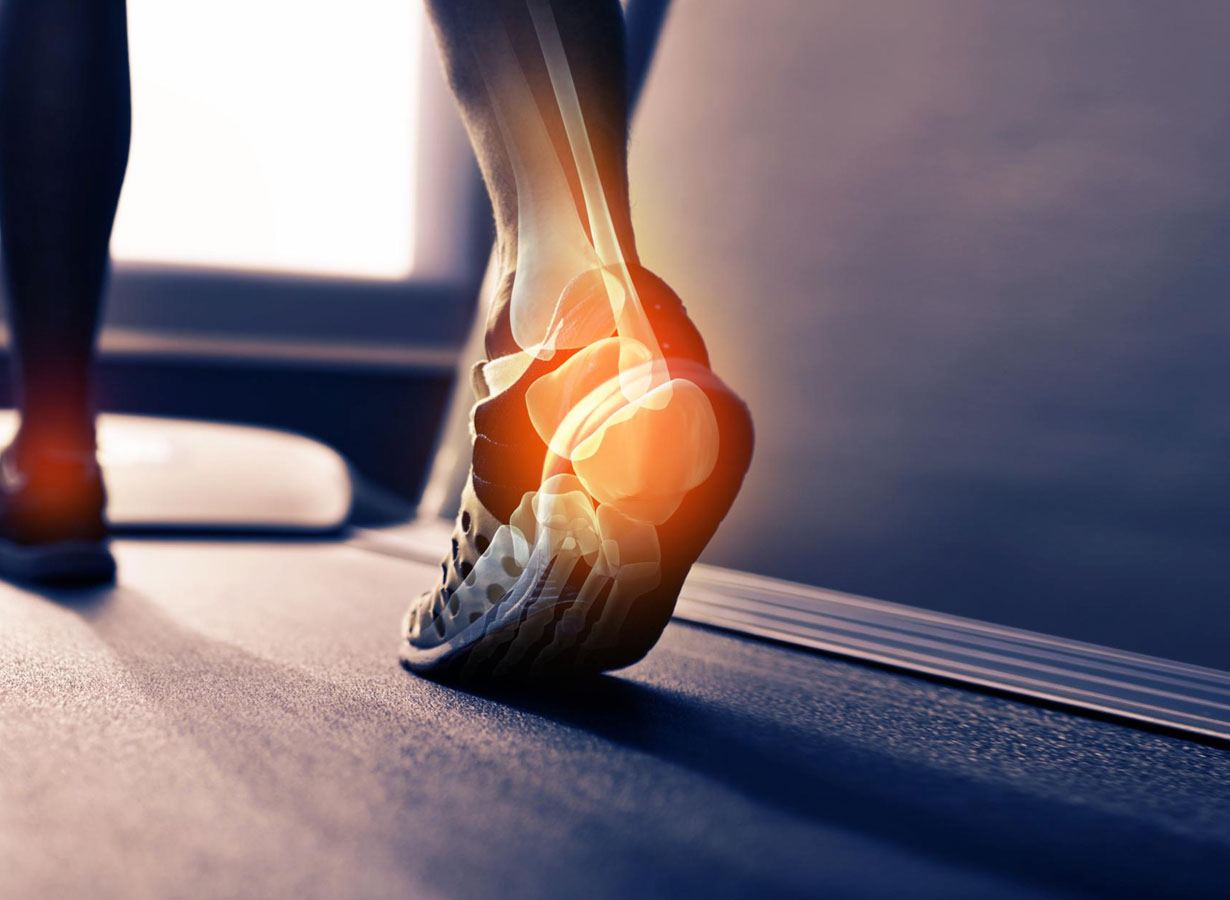Achilles Tendinopathy (AT)
AT is a condition characterized by persistent tendon pain and swelling due to mechanical loading of the Achilles Tendon. Repetitive overload of the Achilles Tendon to a level beyond its threshold leads to degeneration of the tendon. Repetitive microtrauma to the tendon without adequate time for recovery and repair may also lead to tendinopathy (4,5).
Anatomy
The Achilles tendon is the largest and strongest tendon in the human body stemming from the 2 calf muscles i.e. gastrocnemius and soleus muscles, and inserting at bottom of the heel bone of the foot (calcaneus). The Achilles tendon consists of collagen and elastin which gives its strength and elastic-like properties. The Achilles tendon is surrounded by a sleeve, allowing it to move freely between surrounding tissue. The blood supply to the AT is poor resulting in delayed healing (3).
|
Risk Factors |
|
|
Intrinsic |
Extrinsic |
| Blood supply | Training-related changes – Frequency, intensity, duration) |
| Age | Footwear |
| Gender | Terrain |
| Body Weight | History of calf-related injuries |
| Foot arch curvature | Cortico-steroids |
| Ankle stability | Running technique |
| Muscle weakness | Environment |
| Reduced flexibility | |
Assessment
A key part of the assessment is identifying both Intrinsic and Extrinsic risk factors. At Floyd Lebatie Physiotherapy we are committed to conducting an in-depth evaluation in order to do so. The assessment will comprise of detailed history taking and objective tests focussing on the following where applicable: Foot mechanics, hopping tests, muscle and tendon flexibility, strength and endurance (calf raises), static and dynamic balance, ankle stability and range of motion as well as gait analysis (2).
Management
At Floyd Lebatie Physiotherapy, we want you to keep doing what you love most and thus it is firstly our aim to adjust certain modifiable risk factors to provide symptomatic relief whilst providing advice regarding activity modification so that you can still do what you enjoy! We utilize exercise prescription (using time-based criteria and symptom severity) to gradually load the tendon, strengthen, lengthen and condition the calf muscles, improve range of motion at the ankle and we also provide advice relating to running techniques if indicated (1). We aim to not only help you overcome your injury but to prevent it from occurring again in the future!
If you’re battling with Achilles Tendon pain, do not hesitate to contact us on 011 027 2111.
Bibliography
1.Calder, J. (2013). Achilles Tendinopathy: A review of the current concepts of treatment. Bone and Joint Jounal, 95, 1299-1307.
2.Hutchison, A.-M., Evans, R., Bodger, O., & Pallister, I. (2013). What is the best clinical test for Achilles tendinopathy? Foot and Ankle Surgery, 112-117.
3.Kader, D., Saxena, A., Movin, T., & Maffulli, N. (2002). Achilles tendinopathy: some aspects of basic science and clinical management. bjsportmed, 36, 239-249.
4.Santacaterina, F., Miccinilli, S., Bressi, F., Sterzi, S., & Bravi, M. (2021). An Overview of Achilles Tendinopathy Management. Osteology, 175-186.
5.Young, J., & Maffulli, N. (2014). Etiology and Epidemiology of Achilles Tendon Problems.

